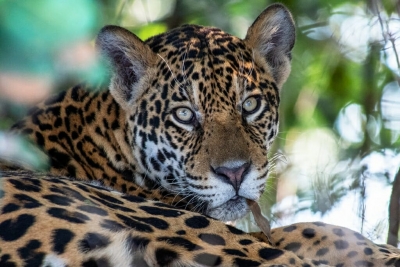
A lot has been said about the benefits of wildfires-from removing alien species and helping native species thrive to killing harmful insects and weak animals. But given the intensity and frequency with which they have been occurring of late, many wildfires are devastating. A case in point is the 2019-2020 wildfire season in Australia that is said to have harmed about three billion animals. Meanwhile, a recent study has discovered that around the same time, fires in another continent have had a harmful impact on an apex predator.
Pantanal is the world’s largest tropical wetland, located in South America. Covering more than 1,80,000 sq.km., it spans Brazil, Bolivia, and Paraguay. The region has one of the highest concentrations of wildlife in this continent; it houses the world’s second-largest jaguar population – 1,668. But just like the Amazon, it is plagued by several threats. Among them is the increase in agricultural activity, resulting in negative human-jaguar interactions and the eventual killing of the predator.
And in 2020, these predators faced another severe form of threat – fires. That year Pantanal was particularly dry, and the situation was made worse by a “combination of rising temperatures and a drop in water draining to the Pantanal due to deforestation of the Amazon and the Cerrado uplands”. The fires “burnt 31% of Pantanal ecoregion”, and in the process. “45% of jaguars in region were displaced, injured or killed”. They “burned thousands of square kilometres of critical jaguar habitat and may threaten the big cats long-term survival”, according to the research, based on 12 years of jaguar distribution data and 16 years of maps of the burned area.
These carnivores do not migrate, which means, when their habitats shrink, they are crowded in one location, leading to disputes over sharing both territory and prey. And if they do travel afar in search of food, their energy could be sapped, affecting their reproductive capacity. In the long run, if the jaguars disappear from the region, it could throw the ecosystem into disarray since they are at the top of the food chain.
The 2020 fires “burnt 31% of Pantanal ecoregion”, and in the process, “45% of jaguars in region were displaced, injured or killed”. They “burned thousands of square kilometres of critical jaguar habitat and may threaten the big cats’ long-term survival”, according to a research, based on 12 years of jaguar distribution data and 16 years of maps of the burned area.
Picture Credit : Google

